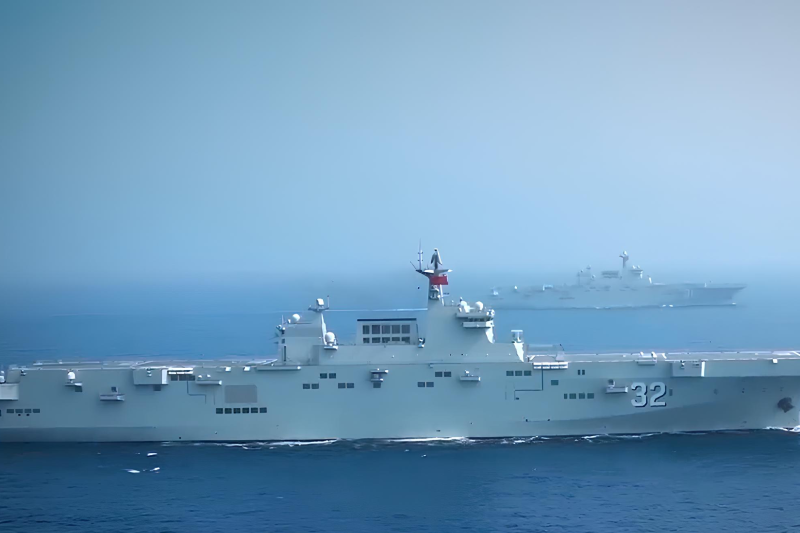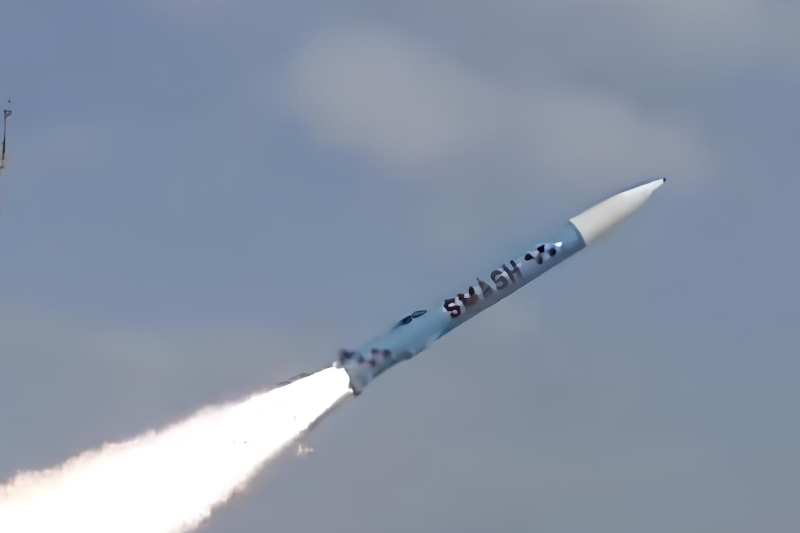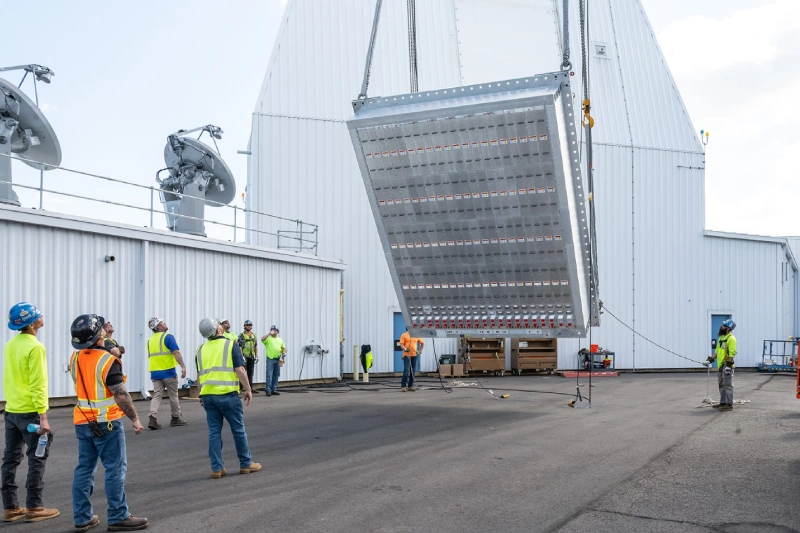Lockheed Martin Delivers Advanced AN/SPY-7(V)1 Radars to Japan
Lockheed Martin has taken a successful step in the international defense collaboration by handing over the first Aegis System Equipped vessel shipset with 4 AN/SPY-7(V)1 radar antennas to the Japan ministry of defense (JMOD). This delivery represents a crucial step in Japan’s naval modernization program and demonstrates the maturity of advanced radar technology in strengthening allied defense capabilities.
Strategic Delivery Achievement
The trucks were delivered with the help of Mitsubishi Corporation via Direct Commercial Sale agreement, showing the developed collaboration between the American and Japanese military industry. Thorough acceptance tests successfully conducted before delivery guarantee the radar systems to be of the most critical demands in military terms in the maritime defense.
Vice president of Multi-Domain Combat Solutions at Lockheed Martin Chandra Marshall emphasized the importance of such achievement, saying that the effective on-time delivery proves the maturity and scale of the SPY-7 radar system. The delivery also demonstrates Lockheed Martin’s production capacity and expertise in complex system integration projects.
The advanced system integration
The Japan Ministry of Defense is purchasing two whole ASEVs with the first two ships to be commissioned within the Japan Fiscal Yr. 2027 and 2028 subsequently. This timeline reflects careful planning and coordination between Japanese and American defense organizations to ensure seamless integration of advanced radar capabilities into Japan’s naval fleet.
This year Lockheed Martin will complete full system integration and testing with all four antennas at the Production Test Center in Moorestown, New Jersey. This approach significantly reduces integration risk while ensuring that commissioning schedules remain on track, demonstrating the company’s commitment to reliable program execution.
Technological Superiority- SPY-7
The SPY-7 radar is a quantum leap in navy defense systems in the sense that it has the top range capability of detecting and tracking targets as well as addressing the combat of complex modern threats. The system’s ability to simultaneously engage multiple targets provides naval forces with unprecedented operational flexibility and defensive effectiveness in challenging maritime environments.
The radar’s sophisticated solid-state technology enables continuous operation while maintaining exceptional reliability and reduced maintenance requirements. The features ensure that the SPY-7 system is of immense value in long-haul maritime operations where prolonged performance is central to the successful execution of the mission.
Multi Domain Combat Capabilities
The SPY-7 radar performs with strong 21 st century security but which increases the efficiency of the naval forces in this uncertain and diverse world. The system’s multi-domain capabilities enable comprehensive threat detection across air, surface, and subsurface domains, providing commanders with complete situational awareness.
The radar has advanced signal processing algorithms to be able to determine the validity of threats and false targets and therefore the chances of errors in engagement are minimized and the detection probability is high. This would be fundamental to the new naval operations whereby identification of threats is critical to the success of a given mission.
Portfolio Of Global Deployments
Beyond Japan’s ASEVs, the SPY-7 radar system is being produced for multiple international partners, demonstrating its global appeal and proven capabilities. Canada’s River-Class Destroyers will incorporate SPY-7 technology, providing the Canadian Navy with world-class air defense capabilities for Arctic and Atlantic operations.
Spain’s F-110 Frigates will also feature SPY-7 radar systems, enhancing Mediterranean and Atlantic maritime security operations. The selection of SPY-7 technology by multiple NATO allies demonstrates the system’s interoperability and effectiveness in coalition operations.
Land-Based Applications
SPY-7 technology can be applied both to sea use and in the land context where special versions were implemented in a critical mission in missile defense. The Guam Defense System is to be equipped with the land-based variant of SPY-7, called TPY-6, and it will offer full coverage of the defense against the ballistic missiles in the strategically located islands of Guam, in the Pacific.
The Long-Range Discrimination Radar also incorporates SPY-7 technology, demonstrating the system’s adaptability across different operational environments. This versatility will guarantee that the SPY-7 technology investments are worth the multiple security sectors.
Tested Battle Record
In December 2024, Lockheed Martin’s land-based SPY-7 radar achieved a significant operational milestone when the TPY-6 variant successfully intercepted a mid-range ballistic missile during Flight Experiment Mission-02. This successful intercept was conducted as part of the Aegis Guam System testing program, validating the radar’s effectiveness against realistic threats.
The effective intercept shows the Maturity of the SPY-7 technology and its availability to be deployed in action. This feat gives hope to foreign partners that the system is going to work successfully in real life.
Multilateral – International Strengthening
The selection of Lockheed Martin’s solid-state radar technology by both the United States and multiple international allies demonstrates the world-class capability and technological maturity of the SPY-7 system. This wide use enhances interoperability of allied forces and assures the use of common technological standards.
The SPY-7 technology international success demonstrates the efficiency of joint efforts by different states aimed at the development of the defense technologies that efficiently use American technological capabilities combined with the ability to fulfill the requirements of a wide range of operations. The strategy boosts the collective security and promotes defense industrial industrial collaboration.
Production Scalability
The successful delivery to Japan demonstrates Lockheed Martin’s production scalability and ability to meet multiple international orders simultaneously. The company’s manufacturing capabilities ensure that delivery schedules can be maintained while preserving quality standards essential for defense applications.
Swift development and production of sophisticated radar systems that placed great demands on the developers can be done through the use of advanced manufacturing processes and quality controls. Such production capacity can deliver well to the local and foreign forces.
Also read this: ASELSAN’s YILDIRIM 100 Successfully Deflects Infrared-Guided Missiles
Operational Impact on Future
The deployment of SPY-7 radar systems will significantly enhance Japan’s maritime defense capabilities, providing advanced threat detection and engagement capabilities in the strategically important Indo-Pacific region. The system’s integration into Japanese naval operations will strengthen regional security cooperation and alliance effectiveness.
Successful delivery spells a new era in Japanese naval capabilities and SPY-7 technology will be the basis of greater maritime security operations. Such improvement promotes the stability in the regions showing the success of the programs of international defense cooperation.
Keep connected with us at Facebook, Twitter, YouTube, Instagram & TikTok for latest defense happening around the globe.
Discover more from International Defence Analysis
Subscribe to get the latest posts sent to your email.












